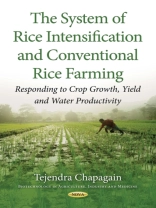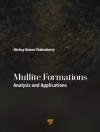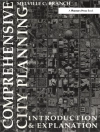The System of Rice Intensification (SRI) involves the adoption of certain changes in management practices for rice cultivation that create a better growing environment for rice crops. The use of intermittent irrigation with alternate wet and dry intervals (AWD) and single transplanting of the younger seedlings in wider spacing areas are regarded as the key factors in SRI for better crop growth and productivity.Field experiments were conducted in Chiba, Japan during the two consecutive rice growing seasons (May-September) of 2008-09 to observe the effects of SRI components on rice crop performance, field environment, water savings, and water-wise rice production. The effects of the irrigation method, age of seedlings and spacing were evaluated in the 2008 rice season with eight treatment combinations in a split-split plot design (S-SPD). AWDI at 10 day intervals and continuous flooding throughout the cropping season were the two main plot factors while the effects of seedling age (14 and 21 days) and plant spacing (30×30 cm2 and 30×18 cm2) were evaluated as sub and sub-sub plot factors, respectively. The experimental results revealed that the SRI management with the proposed AWDI can save a significant amount of irrigation water (29%) without reduced grain yield (7.41t/h compared with 7.37t/ha from normal planting with ordinary water management).Water productivity was also observed to be significantly higher in all combinations of practices in AWDI plots: 1.74 g/liter with SRI management and AWDI as compared to 1.23 g/liter in normal planting with ordinary water management. In addition, the research outcomes showed a role of AWDI in minimizing pest and disease incidence, shortening the rice crop cycle and also improving the plant stand until harvest. Synergistic effects of younger seedlings and wider spacing were seen in tillering ability, panicle length and a number of filled grains that ultimately led to higher productivity with better grain quality.Field experiments with the complete sets of SRI practices were carried out in Randomized Complete Block Design (RCBD) during the 2009 rice growing season in the same field. SRI (with 8 day old seedlings) and conventional (with 22 day old seedlings) practices were the first factor (cultivation method), while organic and inorganic managements were evaluated as the second factor (management method) in the field experiments. The highest yield was observed through the conventional method with inorganic management (6.84t/h) that was on par with the organic SRI (6.59t/h) followed by organic conventional (6.48t/h). It was recorded as 5.92t/h in inorganic SRI management. Overall, the effects of SRI components were positive and significant on a per plant basis; however, they did not differ significantly in terms of grain yield per unit area.The development of healthy and vigorous roots, increased stem diameter, greater productive leaf area, longer panicles, greater number of filled grains, development of plants tolerant to insect-pest and disease, and reduced plant lodging percentage were some notable achievements with SRI management. Water savings and water-wise rice production are other important issues that are likely to draw the attention of rice researchers and farm communities to adopt SRI under scarce water conditions. However, comparatively better grain yields with conventional management methods underscore a need for further investigations in defining an appropriate combination of practices for SRI management, considering local soil properties, prevailing climate and critical watering stages in rice crop management.
Tejendra Chapagain
System of Rice Intensification and Conventional Rice Farming [PDF ebook]
Responding to Crop Growth, Yield and Water Productivity
System of Rice Intensification and Conventional Rice Farming [PDF ebook]
Responding to Crop Growth, Yield and Water Productivity
Achetez cet ebook et obtenez-en 1 de plus GRATUITEMENT !
Format PDF ● Pages 145 ● ISBN 9781536126204 ● Éditeur Tejendra Chapagain ● Maison d’édition Nova Science Publishers ● Publié 2017 ● Téléchargeable 3 fois ● Devise EUR ● ID 7217387 ● Protection contre la copie Adobe DRM
Nécessite un lecteur de livre électronique compatible DRM












